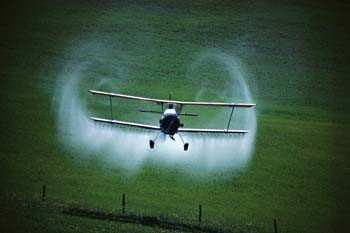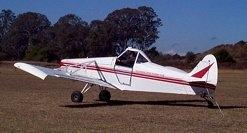Thu, May 15, 2014
Calls For Stronger Collaboration Between Regulators And Industry
The NTSB has released findings from its Special Investigation Report on the Safety of Agricultural Aircraft Operations. As a result of the safety issues identified in the study, the NTSB issued eight safety recommendations to the FAA and the National Agricultural Aviation Research & Education Foundation urging the two organizations to work together to develop and distribute agricultural operations-specific guidance on fatigue management, risk management, aircraft maintenance, and pilot knowledge and skills tests.

Agricultural operations, a niche group within the general aviation community, are subject to many safety hazards because they fly low enough to have to be concerned about obstacles such as power lines, communications towers, and meteorological evaluation towers. While these operations have historically ranked sixth or seventh among general aviation sectors in terms of hours flown, they have ranked third in terms of the number of annual accidents. Based on a review of these data and the findings from several agricultural operation accident investigations, last year, the NTSB initiated a special investigation to better understand the issues affecting the industry. During the 2013 aerial application season, the NTSB investigated 78 accidents, which included gathering information in the areas of pilot work and sleep schedules, pilot training and experience, and aircraft maintenance.
“Ag operations are inherently flown at low altitudes, often close to obstacles and hazards. That kind of flying requires rigorous risk assessment and risk management to operate safely,” said NTSB Board Member Earl Weener.

Investigators found that collisions with obstacles are a prevailing concern in the industry. In addition to the special report and recommendations, the NTSB issued a new Safety Alert, “Preventing Obstacle Collision Accidents in Agricultural Aviation.” The alert encourages ag-operators to conduct thorough preflight and aerial surveys, use technology to identify and maintain awareness of obstacles, and have a better understanding of the performance limitations and requirements of their aircraft. A companion Video Safety Alert was created and released to help inform and educate pilots, operators, and maintenance personnel.
(Images from file)
More News
Aero Linx: International Federation of Airworthiness (IFA) We aim to be the most internationally respected independent authority on the subject of Airworthiness. IFA uniquely combi>[...]
Ultrahigh Frequency (UHF) The frequency band between 300 and 3,000 MHz. The bank of radio frequencies used for military air/ground voice communications. In some instances this may >[...]
A Few Questions AND Answers To Help You Get MORE Out of ANN! 1) I forgot my password. How do I find it? 1) Easy... click here and give us your e-mail address--we'll send it to you >[...]
From 2019 (YouTube Edition): Learning To Paint Without Getting Any On Your Hands PPG's Aerospace Coatings Academy is a tool designed to teach everything one needs to know about all>[...]
Also: Sustainable Aircraft Test Put Aside, More Falcon 9 Ops, Wyoming ANG Rescue, Oreo Cookie Into Orbit Joby Aviation has reason to celebrate, recently completing its first full t>[...]
 ANN's Daily Aero-Linx (05.06.25)
ANN's Daily Aero-Linx (05.06.25) ANN's Daily Aero-Term (05.06.25): Ultrahigh Frequency (UHF)
ANN's Daily Aero-Term (05.06.25): Ultrahigh Frequency (UHF) ANN FAQ: Q&A 101
ANN FAQ: Q&A 101 Classic Aero-TV: Virtual Reality Painting--PPG Leverages Technology for Training
Classic Aero-TV: Virtual Reality Painting--PPG Leverages Technology for Training Airborne 05.02.25: Joby Crewed Milestone, Diamond Club, Canadian Pilot Insurance
Airborne 05.02.25: Joby Crewed Milestone, Diamond Club, Canadian Pilot Insurance




